I’ll never forget the first time I tried incorporating games into my math block. It was my first year of teaching, and I had all the right intentions, but the execution was a total disaster. Sound familiar?
My plan was to teach a math lesson to the whole class, and then have my students rotate to different activity centers: a center where they would meet with me, one where they’d play games, and one where they’d complete their seat work. It was essentially Math Workshop before I knew Math Workshop existed.
After briefly introducing each center that morning, I taught a whole-class math lesson and sent everyone to their first math rotation. My students headed to their activities with excitement, and I sat down in front of the small group I planned to work with.
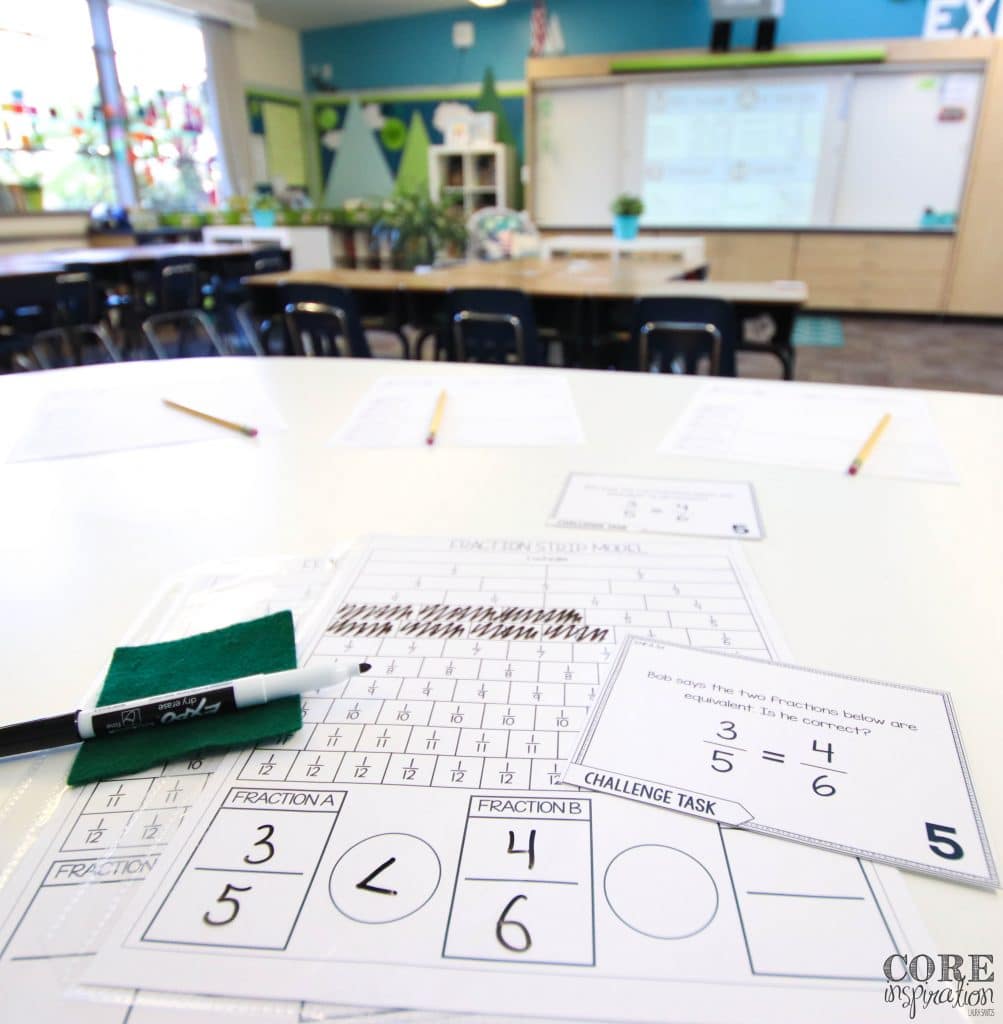
What It Looked like when math games failed
Within the first minute, confused stares turned toward me from the corner where students were playing games. I proceeded to focus my attention on my small group in hopes that the students playing games would persevere and figure out the answers to the questions they had. No such luck.
Soon, student after student visited me from the game station, each with a different question. When they had their answer, they’d eagerly hurry back to the game center to share their knowledge with the others in hopes of being a helpful hero in the group. All the while, the sweet small group of students who needed a follow-up lesson sat in front of me, only to listen to me answer question after question about math games.
Overall, it was a total fail, and by the end of the math block, I was left feeling exhausted and anxious about the whole experience. It became my mission to figure out how to make math games work well in my classroom.
Three Tips for Math Game Success
After a couple years of trial and error with math games, I identified the pain points that were making this learning tool less-than-enjoyable in my classroom and solved each one.
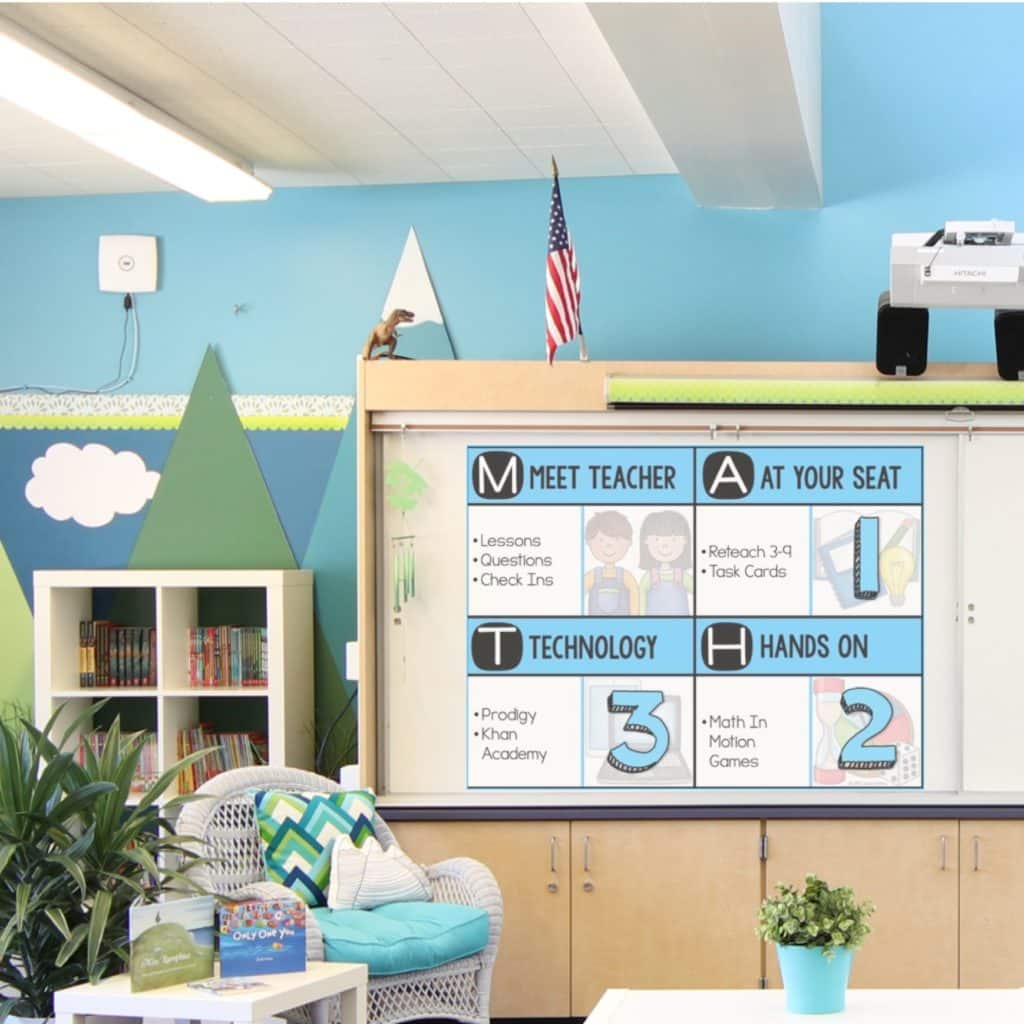
Now, I am a strong believer that math games are one of the most effective and engaging ways for young mathematicians to practice basic math skills each day, and I have three tips that can help you incorporate them in your own classroom successfully.
So, if you’ve had an experience like the one I just described, or if the idea of incorporating games into your math block seems daunting, then you’ve come to the right place.
TIP #1: OFFICIALLY INTRODUCE YOUR GAME STATION
Before you send your students off to play math games while you meet with small groups during your math block, you’ll want to take steps to ensure they can remain focused and independent for the duration of time they’ll be working at the game station. Thoroughly introducing your game station will help you do just that.
Designate a place in your classroom where game instructions and supplies will be consistently located. Gather your students around this location and give them a tour of what they’ll find there. For example, our game station has drawers where students will find instruction cards for four different games at any given time. Next to those drawers are bins with math manipulatives and timers that are required for the games they’ll be playing.
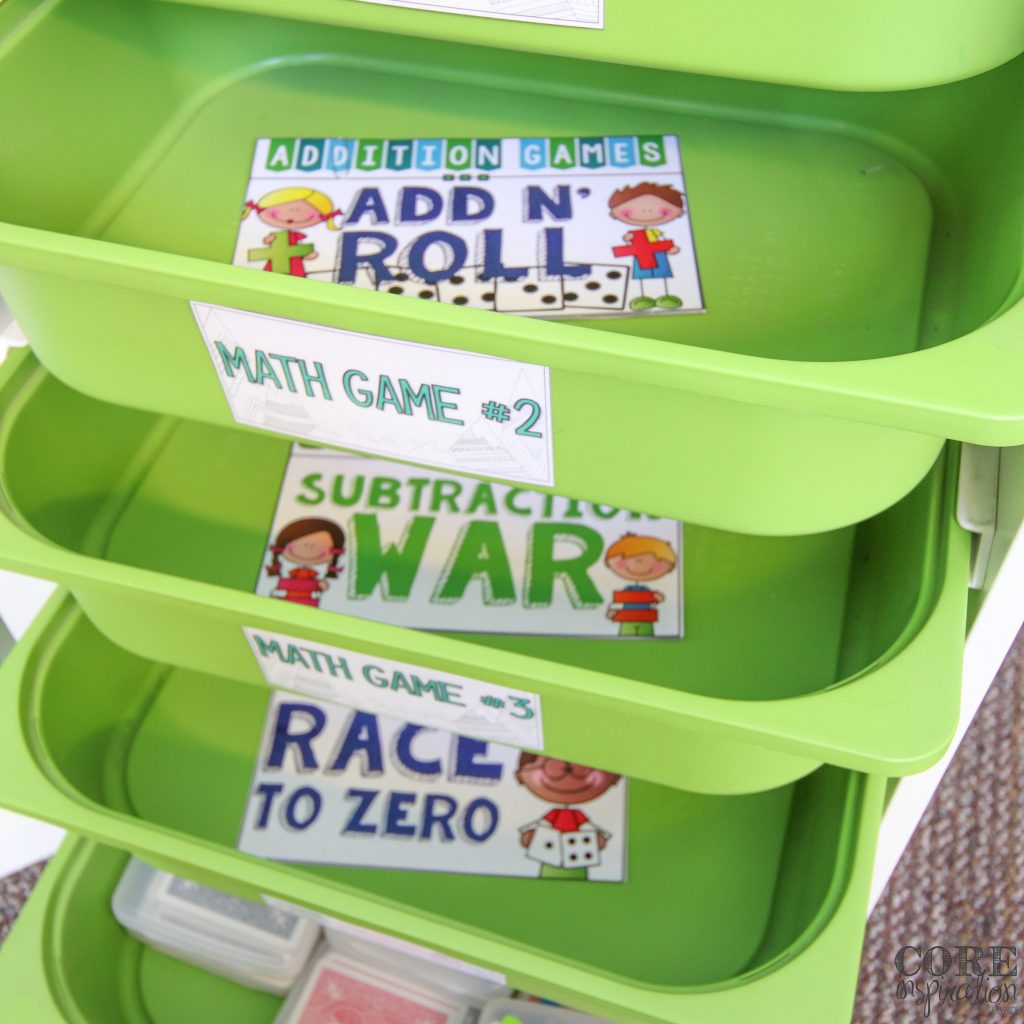
Have students share their observations about the organization of the game station and make plans together for how that organization can be maintained each day. Working together to set these expectations will build student ownership for the materials they’ll be using so they can be reused year after year.
How to Challenge Students to Care for Materials
I always take a moment to point out the mint condition of our game instruction cards and manipulatives. Students are always so impressed that all these supplies have been used by many classes before them.
I ask my current group of students what my previous students must have done to take such care of these learning tools. They come up with an impressive list of ideas. Then, I ask if they can do the same so next year’s class has supplies that are just as nice as the ones we see in front of us. This little challenge is a great motivator.
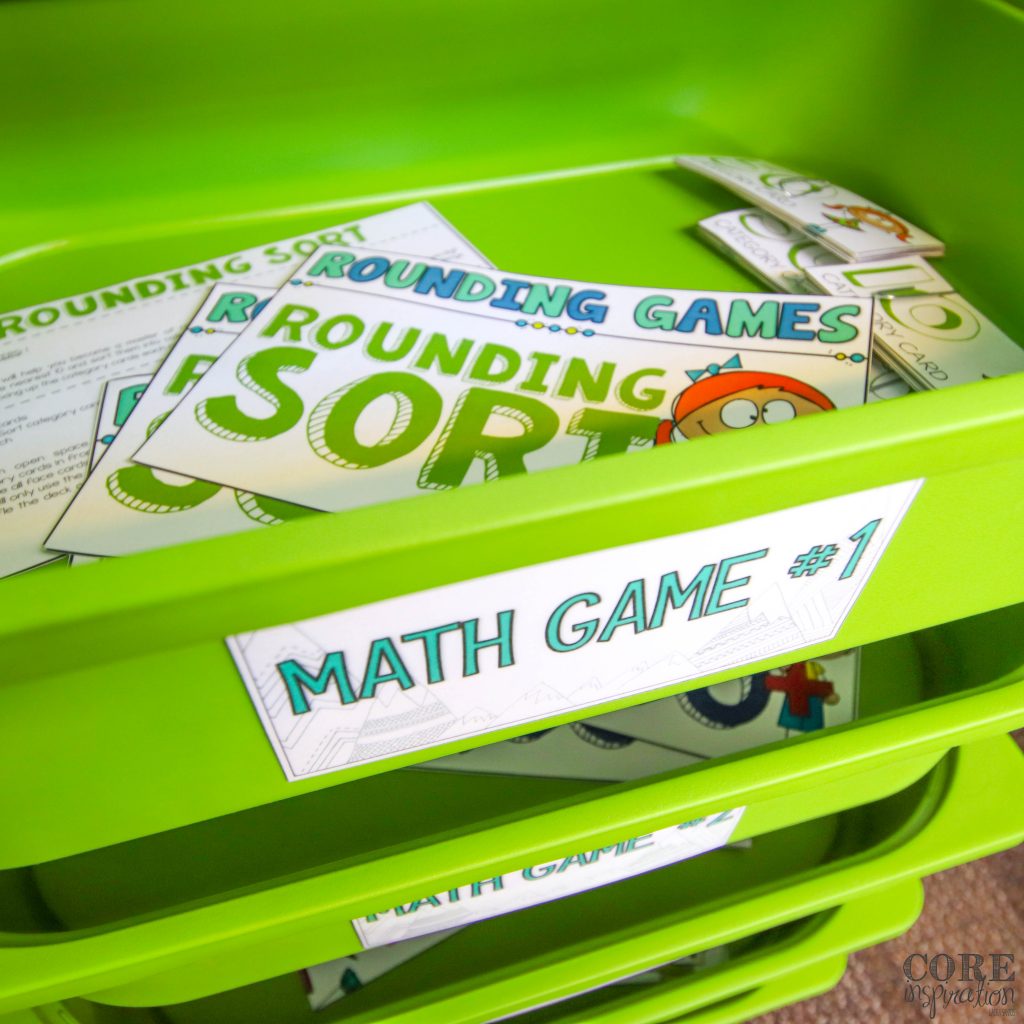
For some groups, an introductory tour carries them through successful organization and maintenance of our game station for the entire year. For other groups, positive reminders about organization and additional conversations are needed in the first months of school to help them develop the skills needed to maintain the game center.
TIP #2: HOST A DEMO ROUND
The second key to successful game play in your classroom is modeling how to set up, play, and tidy up the game. I call this a demo round. Using think alouds, reading the game card, and physically acting out each step during your demo helps students develop a clear picture of what playing a math game entails.
Math Game Monday
These demo rounds take place frequently in my classroom during “Math Game Monday.” This is a 15-minute chunk of time in our schedule every Monday when new math games are introduced. Some weeks, only one new game is shared, but other weeks, we have enough time for two new games.
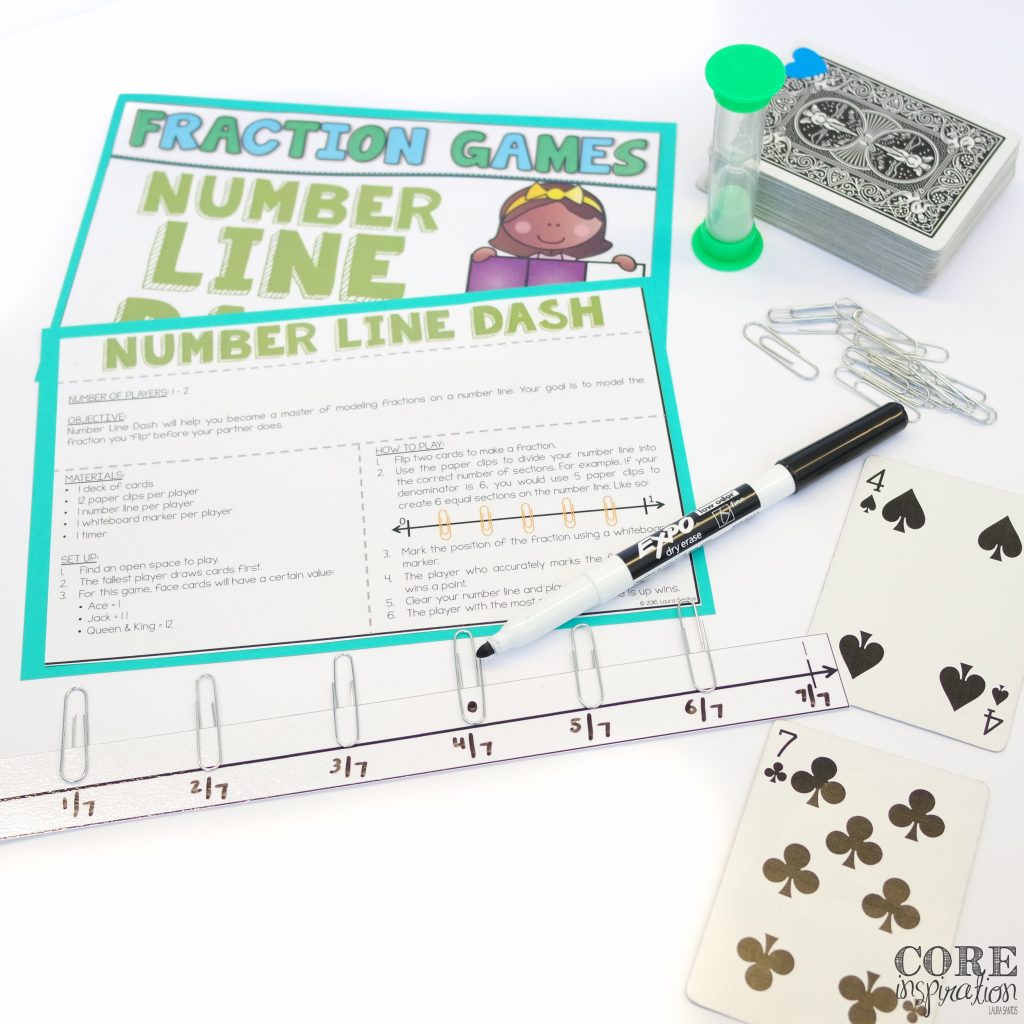
We begin by setting up a fishbowl. All the students sit, kneel, or stand in a circle around a big open playing space, where I model how to play the game with student volunteers. When doing this in my classroom, I model the following steps while thinking and reading aloud.
Math Game Month Interactive Modeling Steps
- Efficiently select an instruction card from the game station.
- Read the number of players.
- Find classmates who are interested in playing the same game.
- Find an open area to play.
- Read the objective for the game.
- Read the list of supplies as I gather them from our game station.
- Read and execute the “Setup” steps.
- Follow the “How to Play” steps as I think aloud in detail.
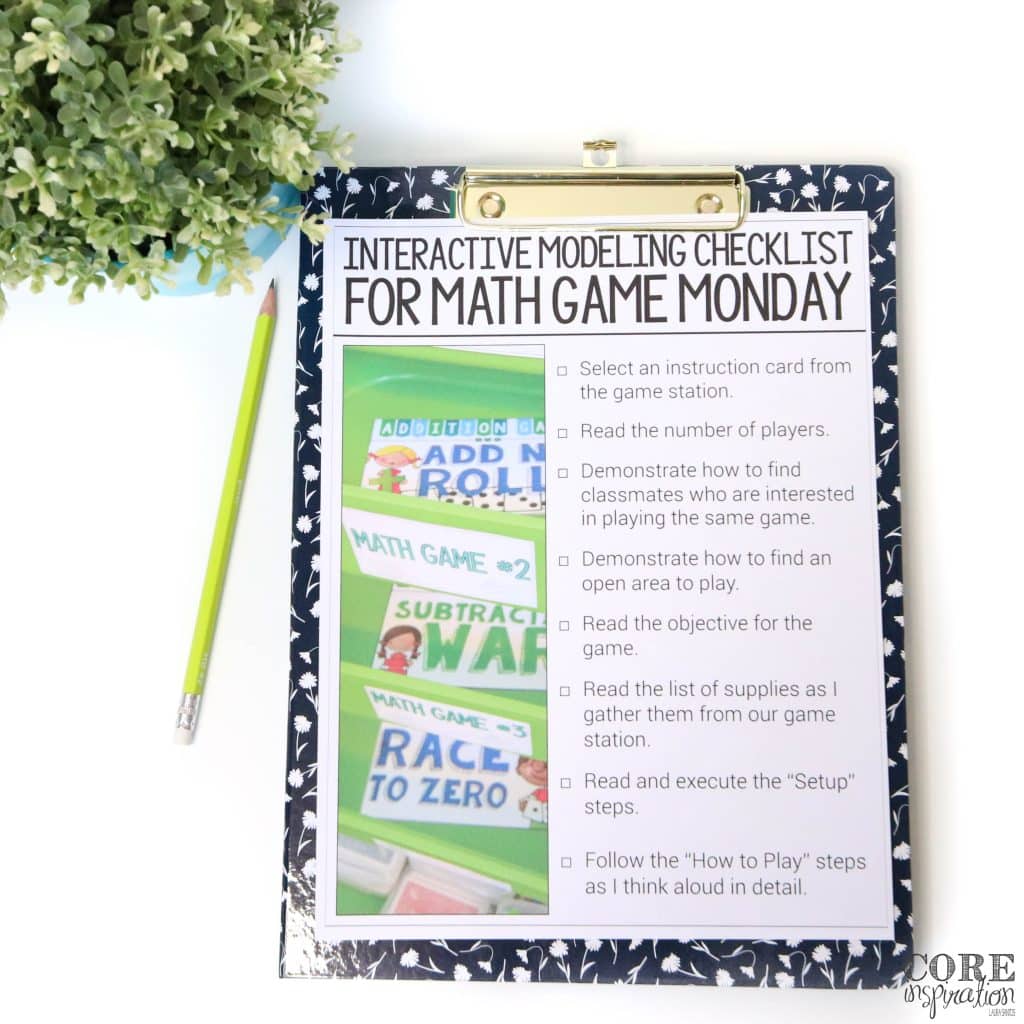
I always emphasize the math thoughts I have when my partner is taking their turn. This helps students understand how to stay engaged, even when it’s not their turn.
Modeling Appropriate Voice Level for Game Play
After I feel my students have an understanding of the game, I pause and ask them to envision themselves focusing at their seat, while I am here on the carpet playing a game and talking in my normal voice. They all groan and agree that I would be a major distraction to them if I were to play this way. I then tell them I’m going to shift my demo to “actual game play mode.”
My partners and I then play the game as if we are actually playing during Math Workshop. We are calm, we talk to each other here and there, we sit close to one another, we use hand motions, and we always use very quiet voices. This shows students it’s easy to communicate in calm ways that help everyone stay focused on their work.
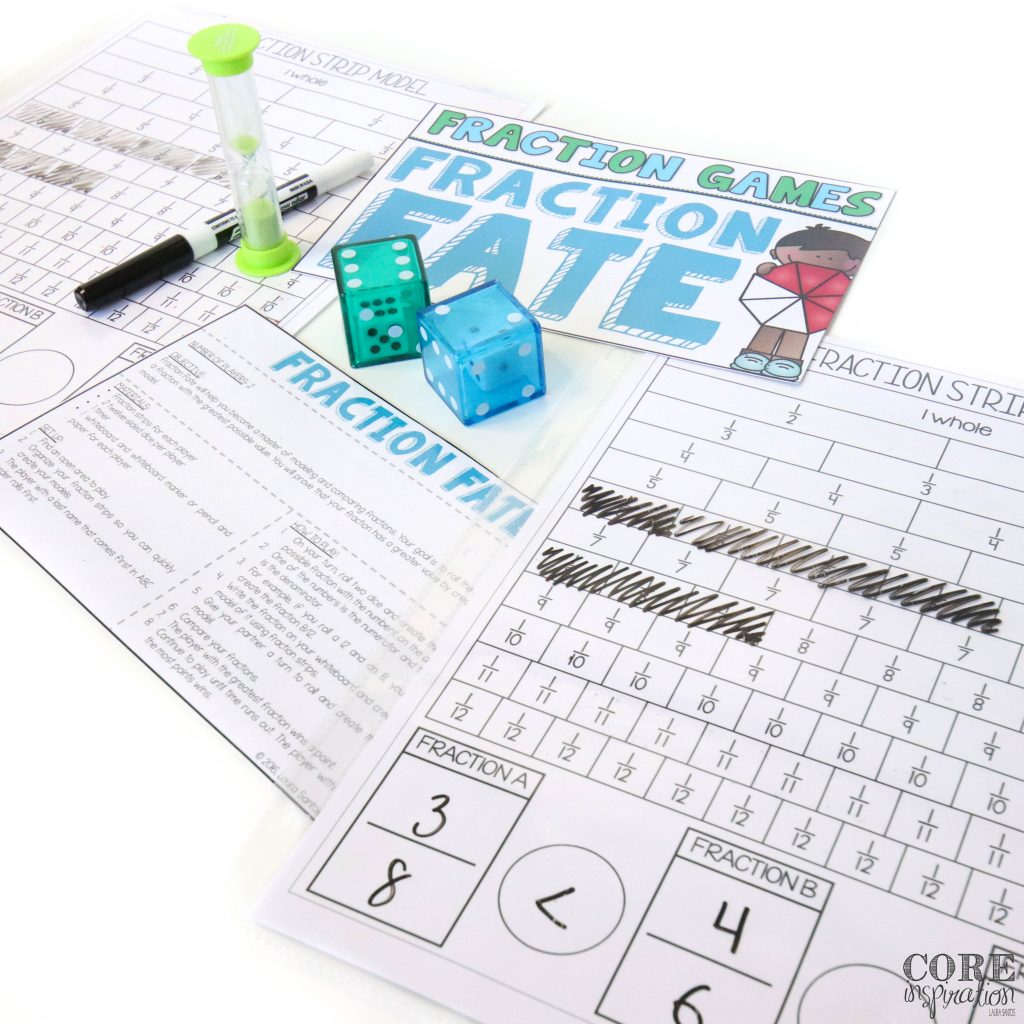
After playing this way for 1-2 minutes, we pause, and I answer any questions students may have. Then, I model how to tidy up the game card and supplies following the expectations we have set together as a class. This is the perfect opportunity to remind students of the ideas they generated for maintaining our game station and to share compliments about their strengths in relation to keeping our games organized.
TIP #3: KEEP ENGAGEMENT HIGH WITH RIGOROUS MATH GAMES
My final tip is to use rigorous math games that have a consistent format for every unit. If your district-adopted curriculum comes with amazingly rigorous games, then this tip will be a breeze to carry out. I wasn’t so lucky, and this took me a bit longer to wrap my head around.
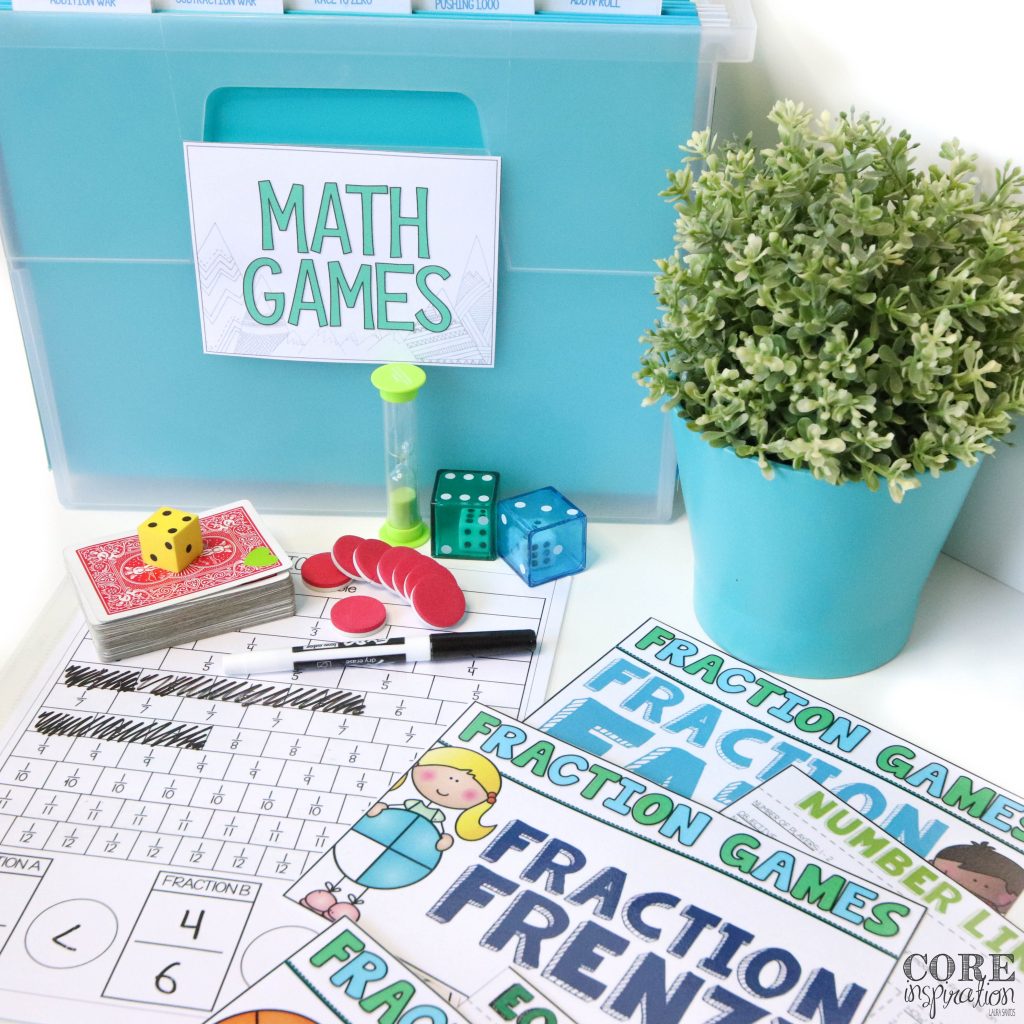
Even after our math games were organized in a location that students could easily navigate, and even after I was modeling math games, students weren’t as excited about our game station as I had hoped. Some of the games were too confusing for students to play independently, while others didn’t provide enough of a challenge to hold students’ interest. I began supplementing the small collection of games so I had a wider variety of games that all included the following features.
Features of Core Inspiration Math Games
- Minimal preparation on my part.
- Handy printable game cards that are used as a “ticket to play.” Students set their game card next to the playing area, making it easy for me to see which game they are playing so collecting formative assessment data is a breeze.
- Consistent format on every game card to boost student independence.
- Standards-aligned game objectives written in student-friendly language.
- Step-by-step instructions with examples written in student-friendly language to boost independence.
- Instructions on who the first player should be to eliminate wasted time playing rock-paper-scissors or resolving disagreements.
- Opportunities to use math vocabulary while discussing game play.
- A challenge option to make games easier to differentiate.
- Use of simple math manipulatives rather than complicated game pieces and boards.
READY TO BRING THESE TIPS TO LIFE?
The key to success when it comes to math games is the right combination of low-prep, easy-to-learn, rigorous games that are organized consistently and introduced using clear modeling. With these factors at play, incorporating games into your math curriculum becomes a real treat for everyone in the classroom.
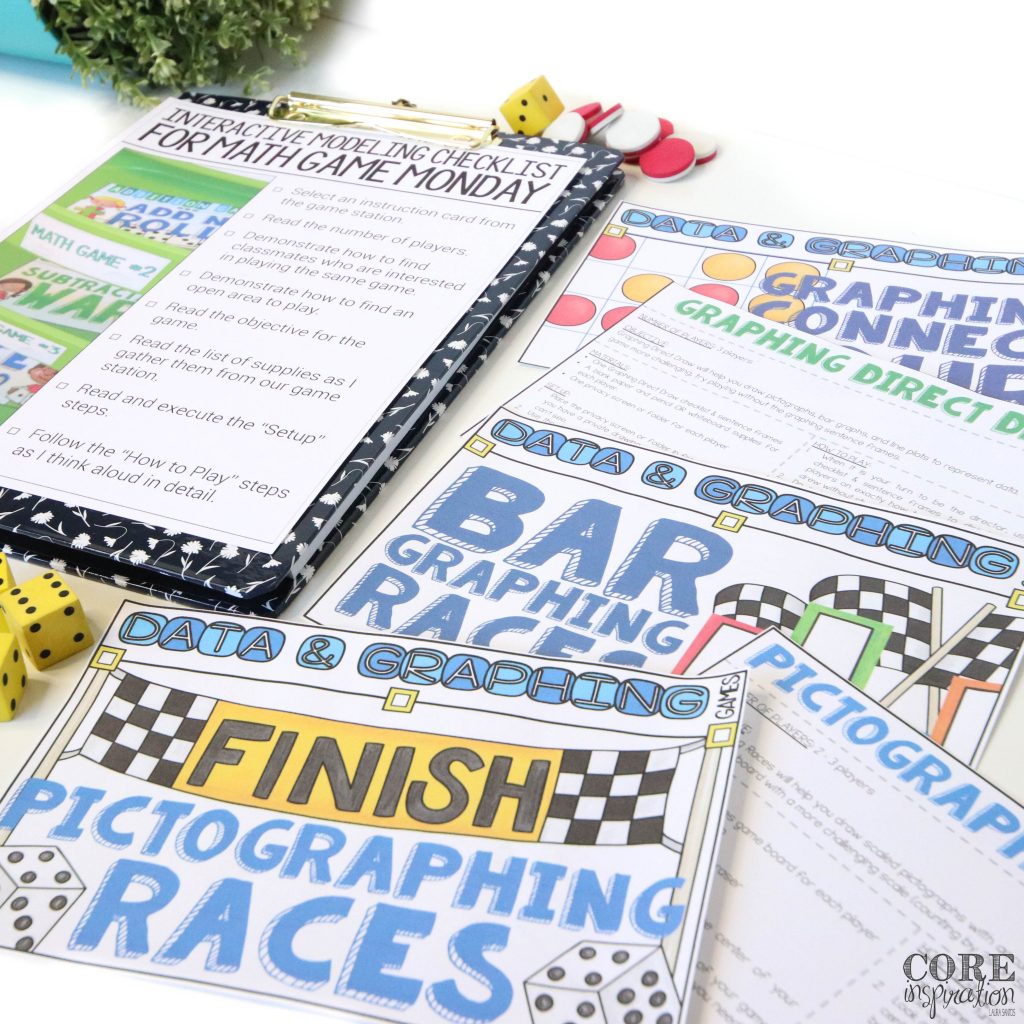
I hope you have gleaned a few golden game-play nuggets that encourage you to take the leap towards incorporating math games in your classroom. Your students will thank you for providing them with more hands-on practice, and you will be thrilled with how engaged your students are when it’s time to pull a small group!
If you’re looking for an easy way to start your math game collection, or if you’re just looking to make math games more streamlined and manageable in your classroom, then you may be interested in my Math in Motion Hands-on Math Games.
The links below will lead you to the larger game bundles for each grade level, but you can grab each individual game set linked within the bundle, as well. I look forward to hearing about your math game wins in the comments below.

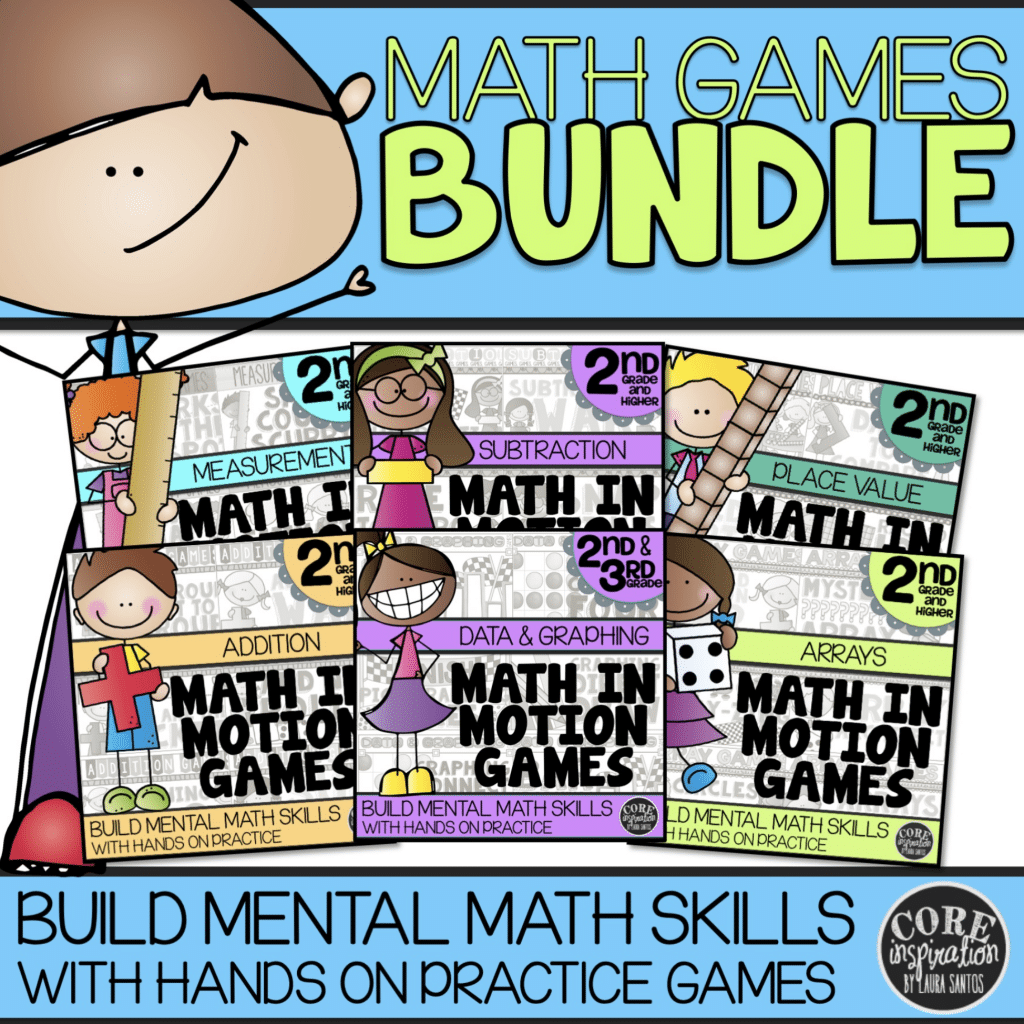
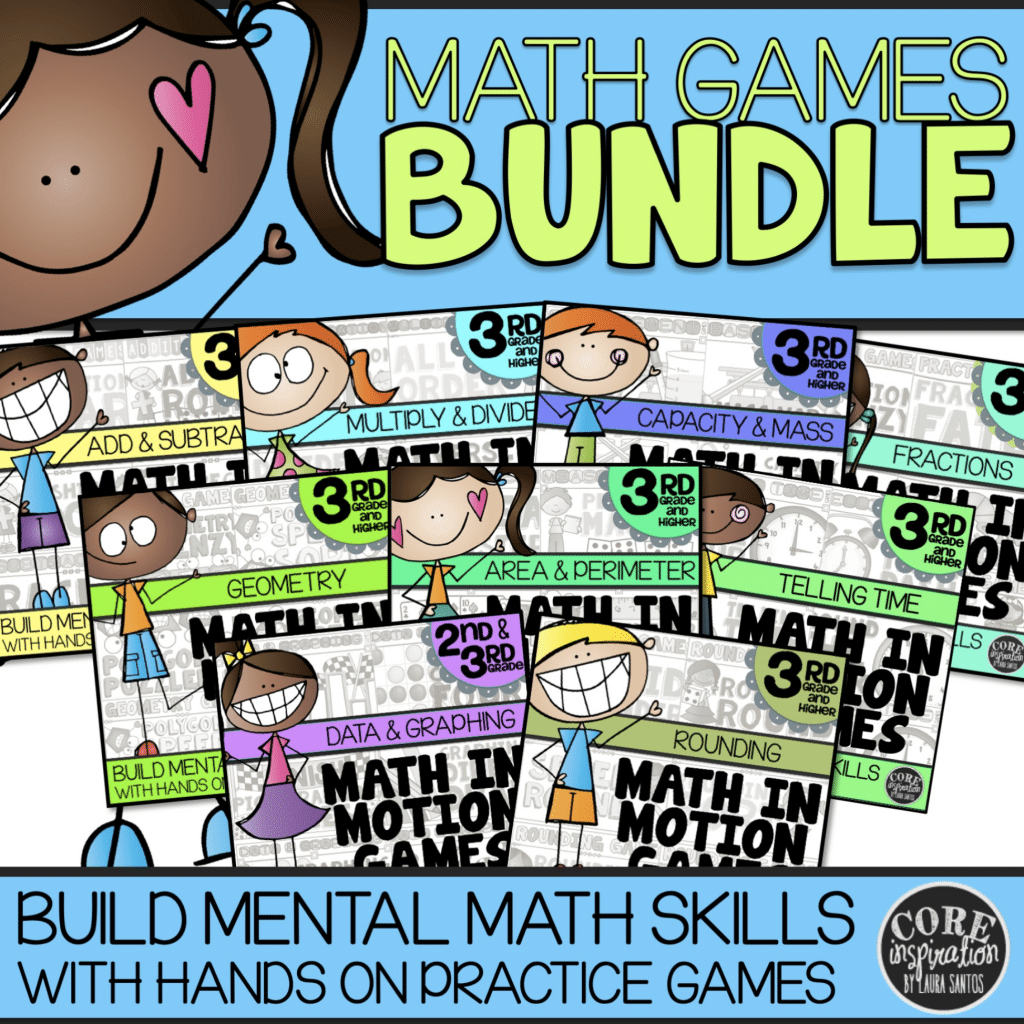
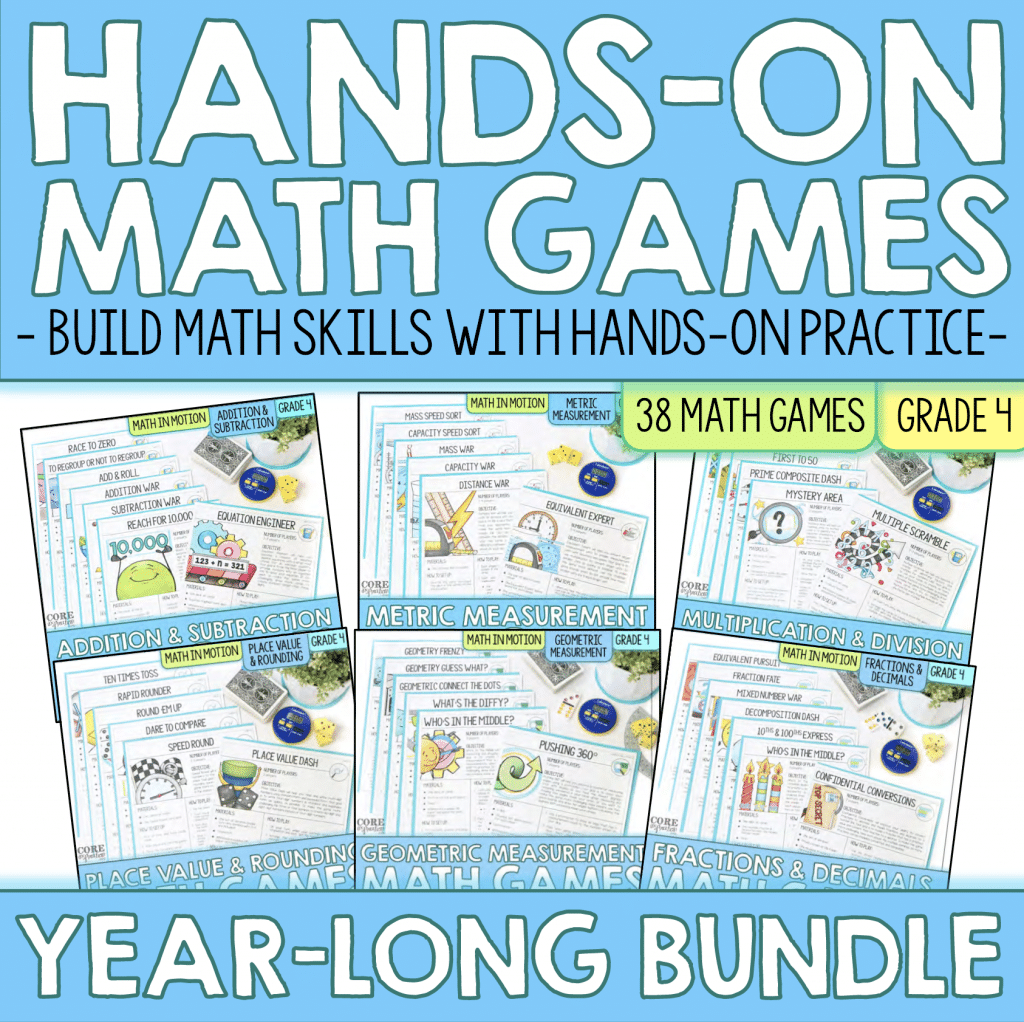

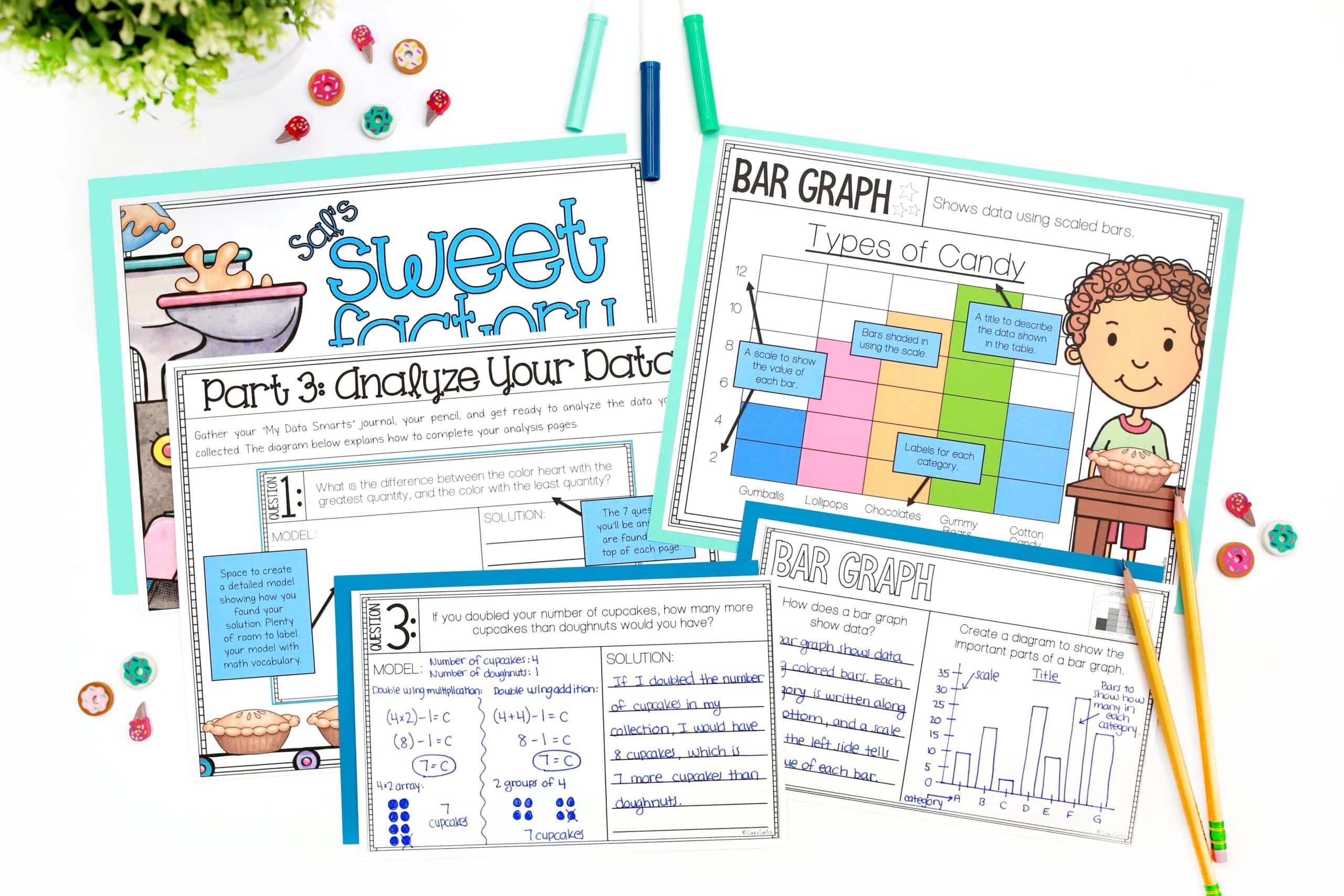
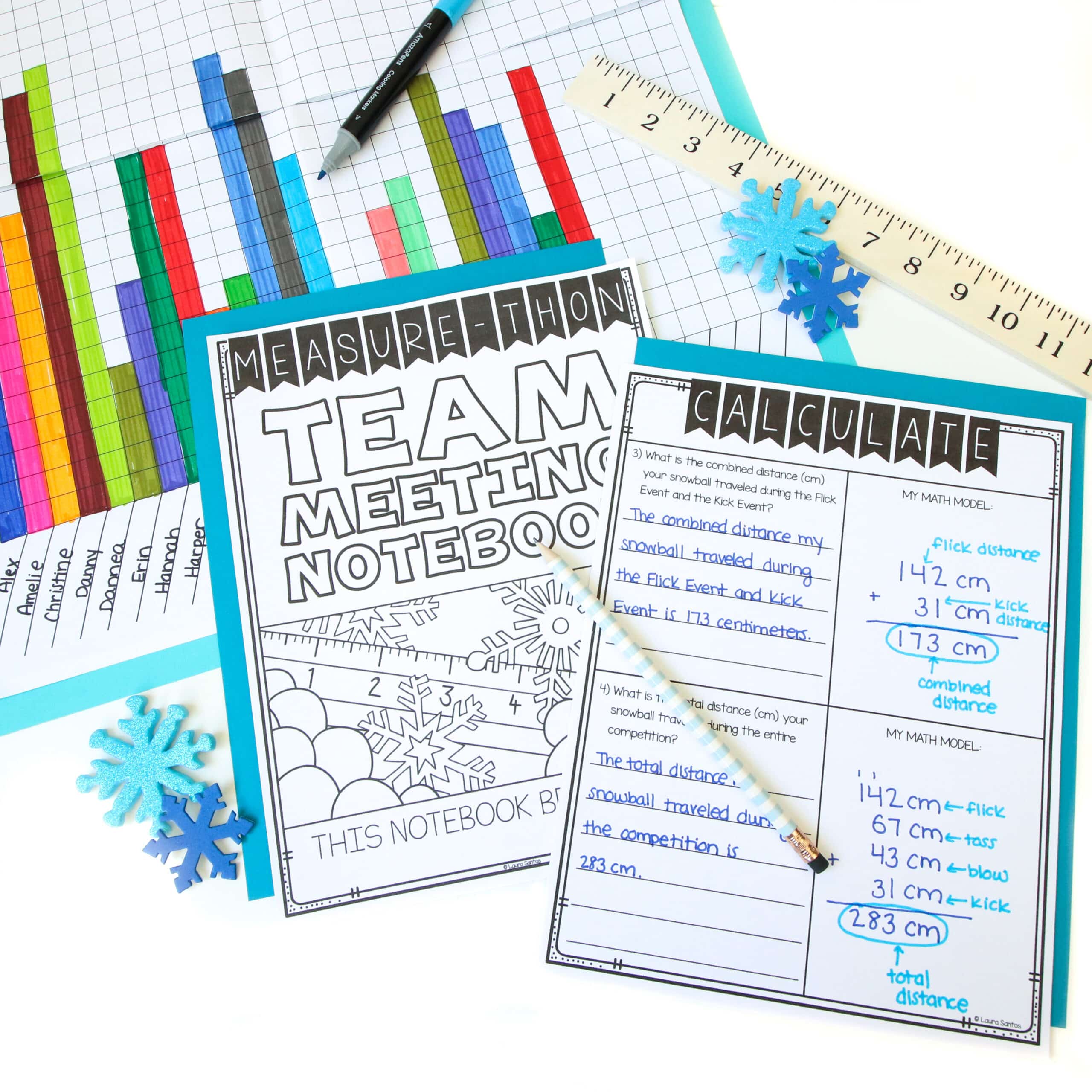

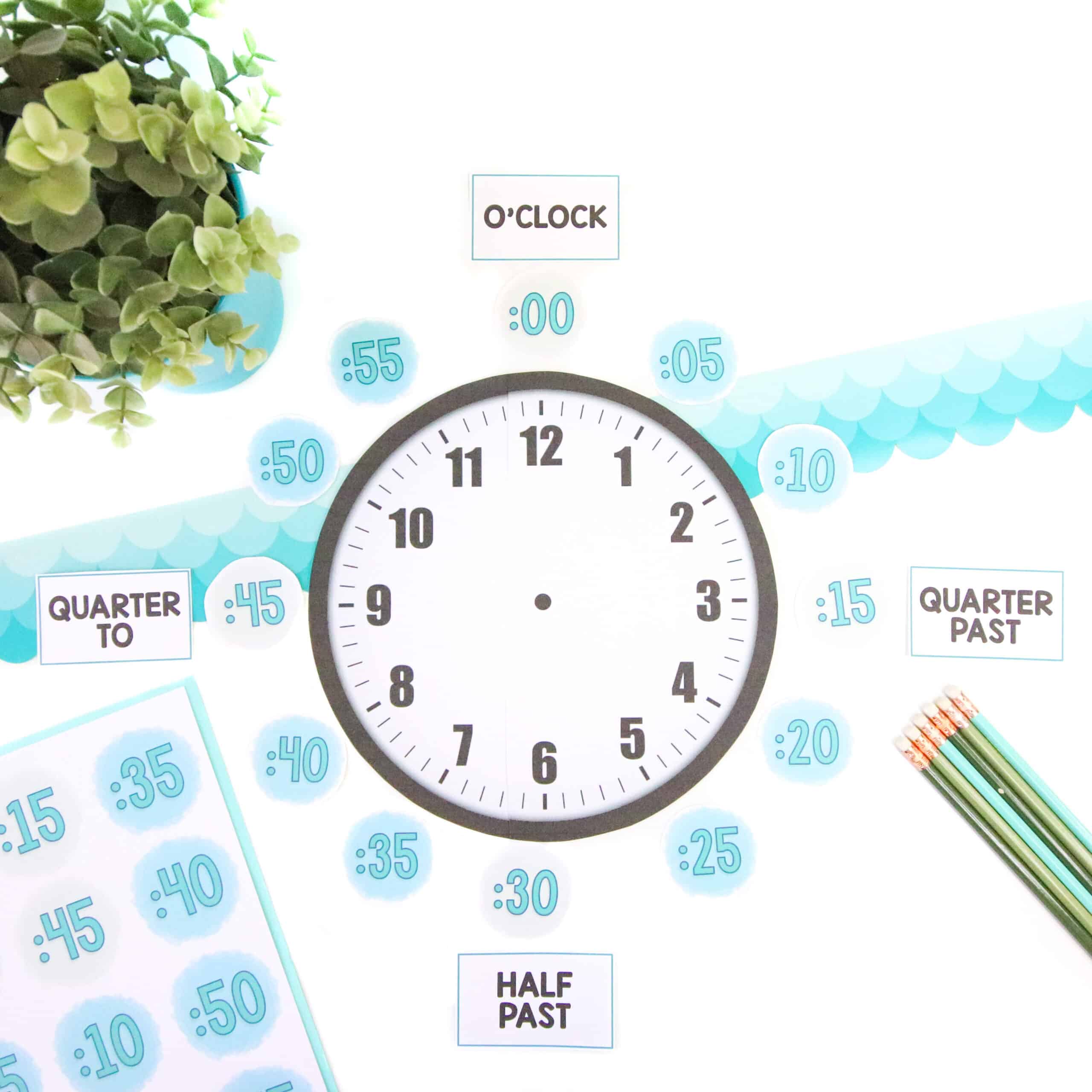
13 Responses
Hi Laura! I am wondering if you have a system for pairing up kids to play the math games. Do kids within the same triad get to play together, or do they have a sign-up somewhere when they are ready to play? Just wondering about this management piece.
Thank you so much.
Delanie
Hi Delanie, I have students who are in the same math group play games together. In order to let other students know they are looking for a partner, students silently hold their Math In Motion game card in the air until they match up with another partner who is holding up the game card for the same game. Then they settle in and get started. They know they need to have their partner and their supplies before our transition time (2 minutes) is over, otherwise they miss their opportunity to play games that day, and participate in an additional round of at your seat work instead.
Warmly,
Laura
Hi Laura. I’m wondering if you could offer these without the people graphics. Thanks so much!
Hi Julie, I do not plan to make a version without the people graphics. May I ask the reason behind the request so I have a better understanding? I appreciate your time.
Warmly,
Laura
So how many options do you leave out for kids to choose from?
Hello Glenda,
I have four game options available at a time.
Warmly,
Laura
Hi again! 🙂
Trying to make sure I have all the right materials for my kids to use the games. I notice you have a 3-minute sand timer linked in another post for class organization. Does this mean that every game that uses a timer is a 3-minute timer length? Also, how many supplies do you have of each type in order to make sure you have enough for the students playing the games (i.e die, counters, timers, etc)?
Thanks!
Hi,
The first question I always get about centers is “how do you differentiate?” How are you differentiating the math games center?
Hi Esther, thank you for reaching out. The math games I use have suggestions for a challenge version of the game.
Hi! If you have to pull a small group of students who are playing a game, how does that work? Do you pull everyone from that group (which I think would be a really big group) so that no one has to worry about their partner leaving for a minute, or do you ever just pull a few students from that group? If so, what do the students whose partners are working with a teacher do in the meantime? Thanks!
Hi Carlie, great question! I use a lot of flexibility with my approach to pulling small groups. If I know I need to pull a student who is going to be playing a game, I let them know before they jump into playing a game to prevent a partner being left behind in the middle of a game. If I know I only need to meet with a particular student for a couple minutes, I tell them to come back with their game partner (regardless of who that partner is – I figure a couple extra minutes of follow up instruction even if the partner doesn’t absolutely need it won’t do any harm). This allows them both to jump into game play after the check in is over without any delay.
How many copies of the same game do you have available?
Hi Jordan, I make for copies of each game available in my class and set out four games at a time.